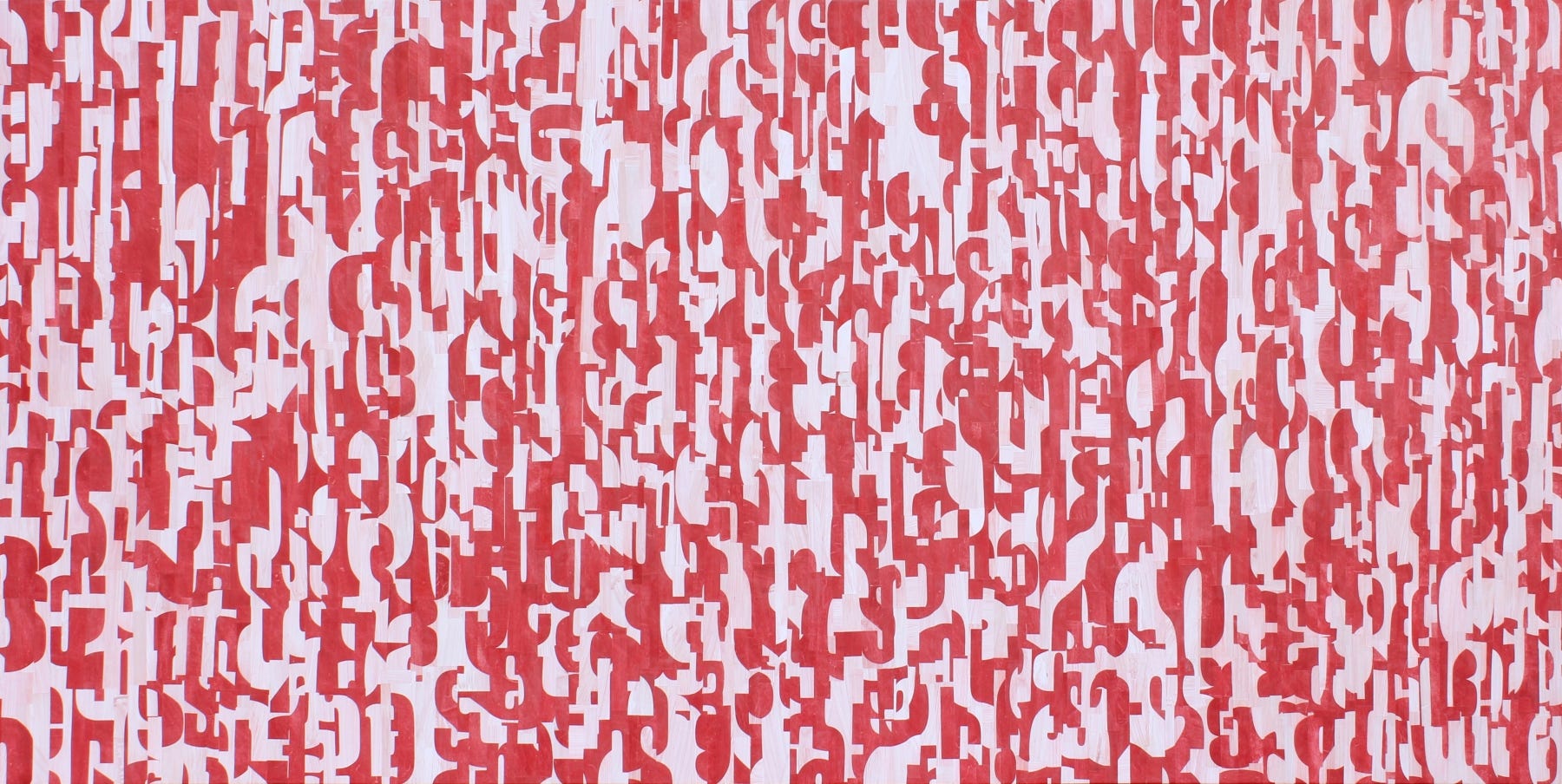Everything Starts with a Line
In the music paintings everything starts with a line. The line is the present moment when something happens. The line breaks the silence of the surface. Activity and influence emanate from the line. All around the line there is an aura of implied activity, an implied sense of light and shadow. The line’s influence extends all around it and leads the eye along its trajectory. A line is going somewhere, it is doing something. It might go in a straight line from point A to point B or it might meander over the entire surface going here and there, back and forth in curves or angles. It might skip along in a staccato of dashes. It might disappear and reappear or roll itself up into a dot. I have various ways to think about how to form lines, sometimes slow, deliberate and with care, sometimes with the fluidity of handwriting where only the hand itself knows what it is doing.
Each line divides the surface into two sides and in general my rule is to have one side light and the other side shadow. It is by light and shadow that all things become distinguished and located in space.
Line is the Original Sound
The next element is the intersection of lines, where they cross over each other. Every intersection had four sections. My rule is to have a highlight in one quarter and shadow in its opposite quarter and the remaining two quarters between them somewhere tonally in between.
With lines and repetitions of lines and the rhythm that can be created as they progress from one to the next, the spaces between can then be articulated in a variety of ways making positive and negative forms and spaces between them.
When looking at one of my paintings of this sort, the key is to identify the lines and follow them around watching how the spaces between are being affected and the forms that take shape between the lines. All tones of light and shadow, all hues from warm to cool emanate from the flow of the line. The line is the original sound emerging from the silence of the surface on which it is drawn. The tones and hues are the orchestration of the surrounding space applied to those lines according to the aforementioned rules.
The Motif in Visual Art and Music
According to my theory, the viewer builds an understanding of the relationships in the composition over time through identifying the various motifs used in the composition and exploring the progressions, harmonies, and variations created by the interaction of these motifs.
A motif in visual art as in music is typically a repeated element, a certain curve or a straight line or a zig zag pattern or series of loops for instance. In music this might be a harmonic motif, melodic motif, or a rhythmic motif. The motif in music is the smallest structural unit possessing thematic identity.
While I am not trying to paint ‘music’ I am taking note of musical principles, concepts and techniques and converting them into a visual counterpart with the intention to create a music-like flow in my compositions.
A Set of Keys for the Viewer
It remains a mystery to me how a viewer experiences these compositions and it is for this reason that I am trying to articulate my intentions in such a way as to give the viewer a set of keys for recognizing what they are looking at and how to approach the experience and unravel the composition.
While there are many other elements in my paintings such as surface treatment, brush work, passage and color palette, etc., the line itself is the main element upon which everything else rests. Drawing has always been the basis of my work in this direction. Other painters may focus primarily on painting itself and may not use drawing techniques at all which is perfectly fine and there are many great painters but this leads to a different set of approaches, practices and conclusions. As a young artist I always felt that drawing was my strong suit. I like the structure afforded me by using drawing as the basis for my experiments and hence the line is the main actor.
Line is Fluid and Dynamic
Line is fluid and dynamic in nature. The line has endless expressive qualities and provides a sense of musical flow. The line is open ended. When line coalesces into form and shape it becomes more static and less dynamic. Similarly, when line becomes too uniform in repetition, this also leads to a static state. A good example would be the meditative paintings of Agnes Martin.
This uniformity in repetition however has been use to great effect by minimalist composers such as Music for 18 Musicians by Steve Reich
To consider these developments in music my response has been something like the following collage on panel. I have made quite a few works along this line over the last 10 years and this is one of the more complex ones.






Even in sculpture and my assemblages, there is in a way a 'line' the eye will follow which is more evident in the total finished piece as the viewer looks at the piece as a whole to find (hopefully) balance among the negative spaces. I may not know immediately why a work of art has a disturbing broken line but eventually after a longer time of viewing it, I'll figure it out. You're drawings feel so joyful and fun to me, maybe not your intentions, but it's the eye of the beholder, of mine here. I've had viewers of my work give their own interpretations of meanings according to their experiences and perceptions and that's fine. Like poetry also or how people read the bible and can contradict what others see/read. I love to hear all perspectives explained.